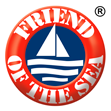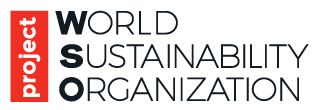Labelled products out to Swiss retailer Manor and international markets
12th of May 2008 – Friend of the Sea announces certification of the first prawn fishery in Indonesia and its products sold by company Seacold Seafoods and Panca Mitra Multi Perdana. The Indonesian artisanal trammel net fishery for Penaeus indicus and other Penaeus species, reported as not overexploited by FAO, has been found compliant with Friend of the Sea certification criteria. The fishery operates from West Borneo, in the Sukadan Gulf and Maya Island and is composed of 138 small boats.
The trammel net consists of three layers of net. A small mesh, inner panel of netting is sandwiched between two outer layers, which are taught and have a larger mesh size. The midwater trammel nets are held vertically in the water by weights on the bottom (lead line), and floats on the top (float line). They are operated at 4 to 5 miles off-shore, in an area where there is no risk of impact on the coral reef habitat.
According to the FAO “Discards in the World’s Marine Fisheries An Update” FAO 2005, trammel nets targeting shrimp are highly selective with 0.5% average worldwide discard rate. Andaman sea trammel nets which are similar to those used in Indonesia average 1% discards. In comparison, shrimp trawling in the Arafura Sea Indonesia leads to 81,7% of discards. Bycatch is approximately 5% and consists mainly in Samgeh (Black Jew), Kurau (Four finger threadfin), Goat fish and Tongue soles. It is consumed by the local population leaving almost no discard.
The certification follows an audit by an international independent certification body and a chain of custody check, which will be followed by a continuous traceability surveillance to assure labelled prawns do not originate from higher impact fisheries.
“Friend of the Sea mission is also to promote artisanal fisheries, in line with FAO guidelines, while assuring their sustainable origin” comments enthusiastically Dr Bray, director of Friend of the Sea “Friend of the Sea stricter certification criteria is ideal for artisanal or lower impact fisheries seeking to promote their environmental performance, while other schemes, less affordable but not necessarily as strict, tend to support higher impact industrial fisheries.”



